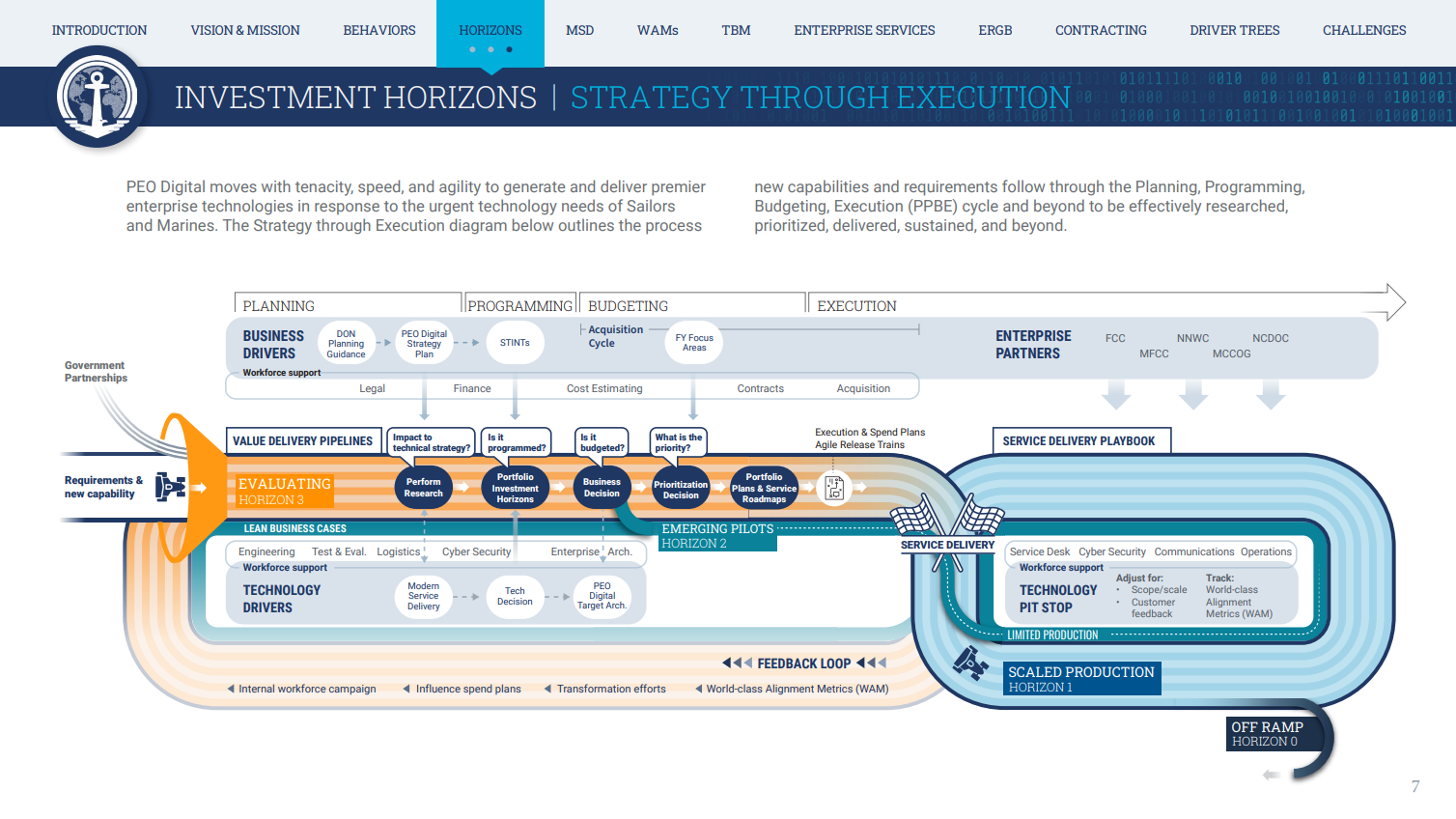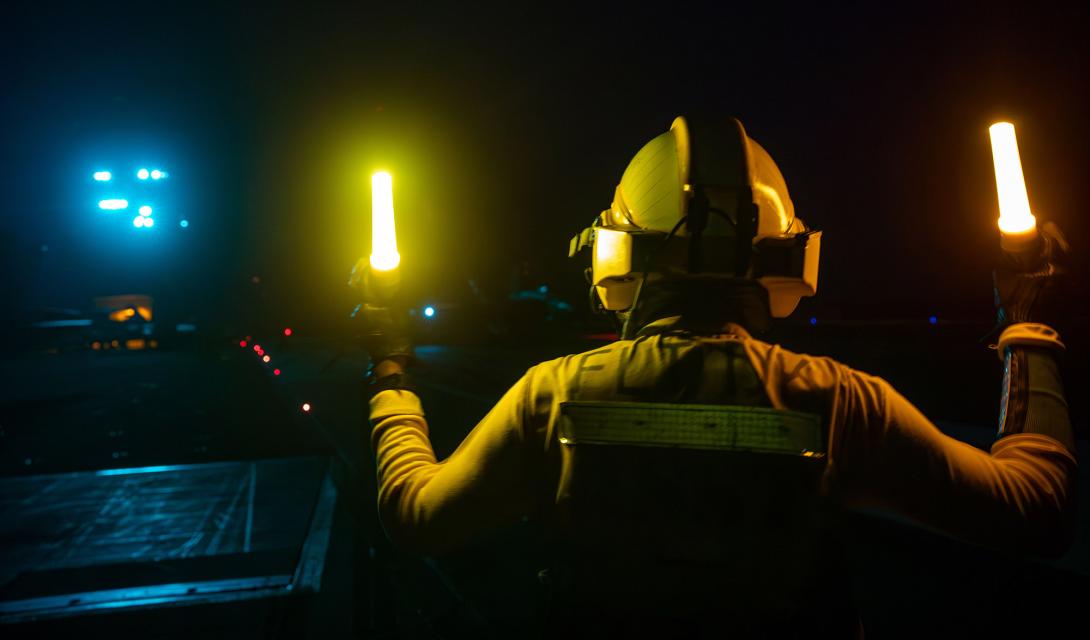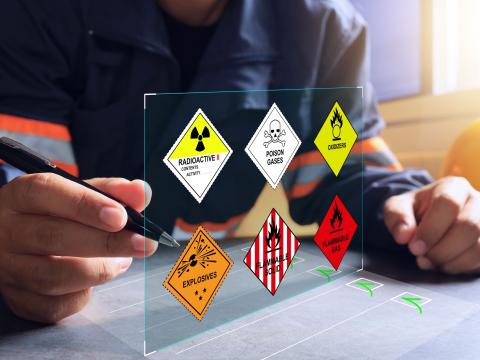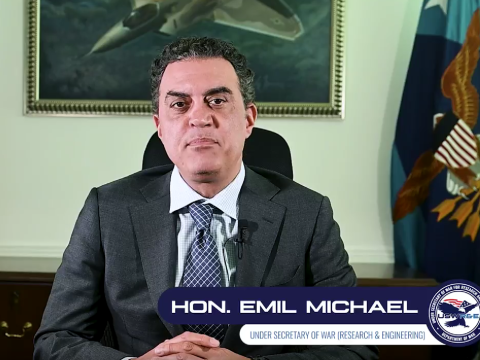U.S. Navy Ditches the Status Quo
To help shrink the Department of Defense’s so-called “Valley of Death,” the U.S. Navy is leveraging its new execution framework to adopt innovation at a more rapid and efficient pace.
In June, the Navy’s Office of the Chief Information Officer released a memo outlining the Department of the Navy (DON) chief technology officer’s (CTO’s) priority technology areas. The areas listed included artificial intelligence, quantum, connectivity and cybersecurity. “DON CTO cannot achieve its objectives alone and as a result seeks to foster collaborative partnerships both inside and outside of government,” the memo reads.
Those areas are high-impact, emerging technology, which requires an expedited acquisition format and the collaboration of industry partners, explained DON CTO Justin Fanelli.
The document notably mentions frameworks and “design principles for how the DON CTO approaches new capability adoption and integration, specifically Investment Horizons,” referring to a somewhat novel yet successful approach.
The Innovation Adoption Kit, an initiative originally designed out of the Navy’s Program Executive Office Digital and Enterprise Services (PEO Digital), explores routes to deliver these modern and necessary tools directly to and with warfighters.
Upon examining PEO Digital’s underperforming programs three years ago, Fanelli and his team identified a recurring theme.
“Every issue came from a very small number of root causes,” he told SIGNAL Media in an interview. “As is often the case, if there are unhelpful trends or common issues that could be solved in a repeatable way, then you can fix the problem.”
One common challenge was more time spent on translation than delivery. “We had the hypothesis that if we used more transparency and more common language and common metrics, then we could make this simple enough that we could deliver at scale a lot faster,” Fanelli stated.
The approach, paired with industry collaboration, resulted in a series of 15 plays within the adoption kit. One of those plays consists of four investment horizons leveraged from industry. “Each Horizon is a proving ground for further investment,” said Michael Schweitzer, senior strategic advisor for the U.S. Navy. Using the world class alignment metrics, or WAM, each technology is objectively evaluated based on its quantitative impacts on mission outcomes.
“The historical norm of allowing something to exist simply because it is deployed at full scale, regardless of its utility, is dead,” Schweitzer explained. “Each investment horizon is a gladiator arena.”
“Horizons are a funnel,” Fanelli said, adding that market research helps companies progress through the funnels faster.
The first in the funnel, Horizon 3, evaluates emerging technologies. This phase is best exemplified by In-Q-Tel, a not-for-profit venture capital firm that conducts market research necessary for innovation adoption. “They were doing the same due diligence as us and more. Theirs is really good, better than we were doing internally, so we found a partner who is doing that work, and we can make use of it,” Fanelli explained.
Horizon 2 is the pilot emerging technologies phase, which funds pilot programs, configures integrations and assesses the impact of test capabilities on the mission in practice.

We’ve made more progress than I’ve seen in 25 years.
Horizon 1 involves two stages: Horizon 1a and Horizon 1b. Horizon 1a moves proven pilots “into enterprise deployment based on quantified mission performance improvements and legacy replacement value,” Schweitzer explained. Horizon 1b extracts the value of the capabilities at full scale. In this stage, capabilities are managed and optimized in full production while being monitored for drift, redundancy or fragility. Finally, Horizon 0 retires legacy technologies and reallocates funding to capabilities that are better aligned across the previously mentioned horizons.
The framework, which was created to help Navy PEOs, has interest from agencies with similar challenges. The initiative has already proven to be successful, Fanelli suggested.
The U.S. Coast Guard (USCG), for example, is also leveraging the framework to bolster its acquisition processes. Whether for mission support or operational execution, the USCG is focusing on the needs of users and operators to deliver the necessary modern technology quickly and effectively. So said Rear Adm. Rusty Dash, assistant commandant for command, control, communications, computers and information technology, and chief information officer of the USCG, during a Fed Gov Today interview at TechNet Cyber 2025.
This mission is critically important for interoperability with the Navy, he explained. “We’re a fast follower to their leadership there,” he said.
Echoing the positive remarks regarding the Innovation Adoption Toolkit’s effectiveness was Andrew McMahon, partner at Ridgeline Ventures, a venture capital firm.
“Navy PEO Digital’s approach is a meaningful shift that makes it easier for venture-backed companies to work with the Department of Defense. Real contracts, an open process, and clear metrics give our portfolio companies the clarity they need to properly engage and succeed,” he said. “We see this as real progress—and a model worth replicating.”
The adoption kit has further helped adopt more classified unmanned system technologies, as well as artificial intelligence capabilities, he added.
As the use of the innovation adoption kit progresses, Fanelli hopes to see other DOD agencies take advantage of the readily available framework. “Everyone has used different language, and everything moves so fast that we haven’t had a common way or common source,” he explained. “Right now, we have simplified the language and tightened partnerships in the interest of being more outcomes-focused and efficient.”
While it took a lot of effort to complete the framework, the outcome has been worthwhile. “We’ve made more progress than I’ve seen in 25 years,” Fanelli stressed.
For the recently announced technology priority areas, the Innovation Adoption Toolkit will open doors to more rapid and agile ways for acquisition.
“We have allowed the enemy into our arena. We have allowed them to play our game. We have allowed competition,” added PEO Digital Deputy Technical Director Bradley Punch. “We can no longer put our warfighters in that situation. We do not wait for a disaster for motivation or action, we attack legacy and status quo thinking, tech and actions daily.”

The Navy’s Program Executive Offices have implemented the Innovation Adoption Toolkit to draw in cutting-edge technology at scale. Image screenshot from PEO Digital, U.S. Navy





Comments